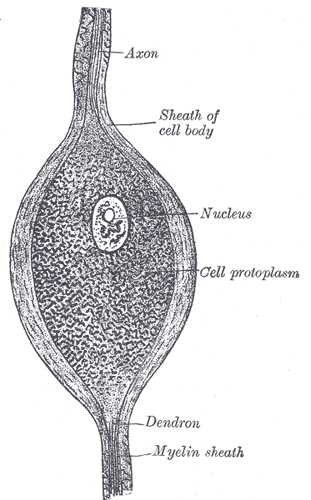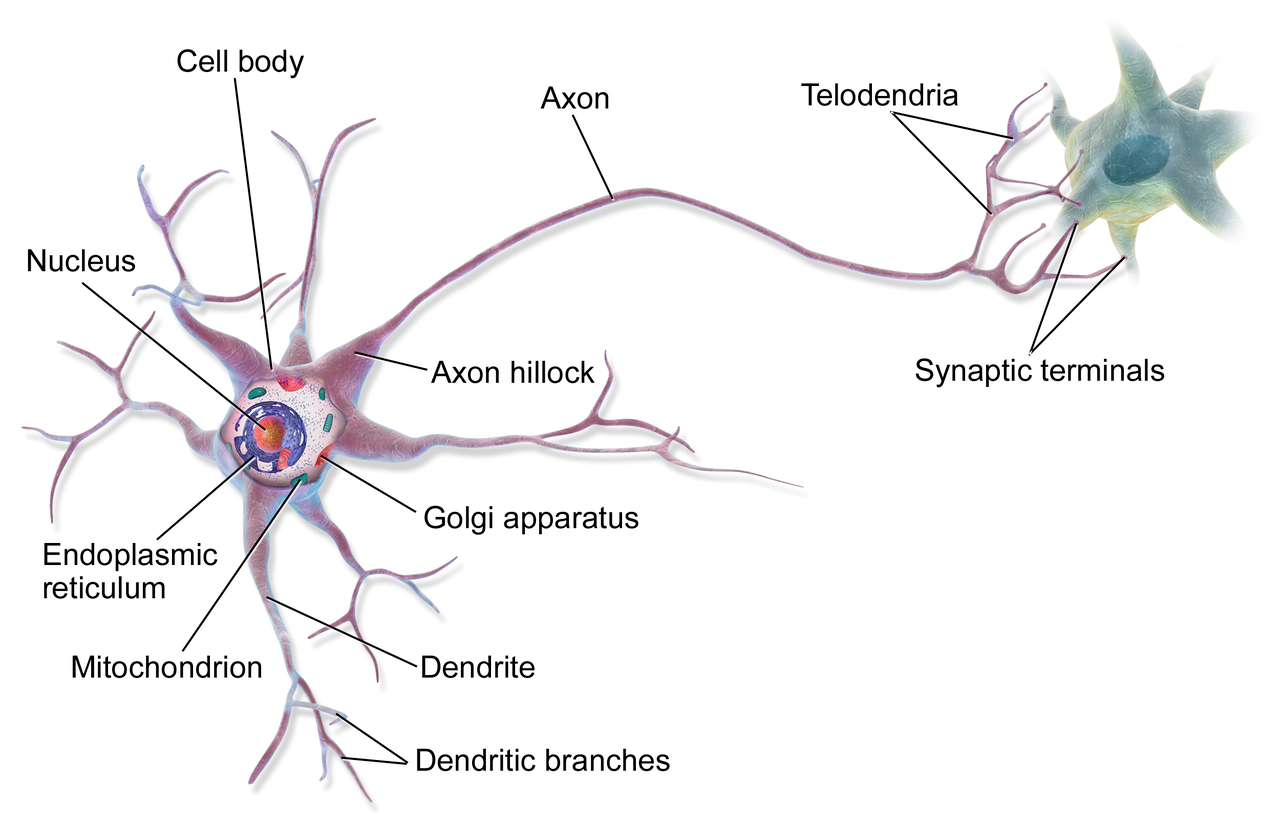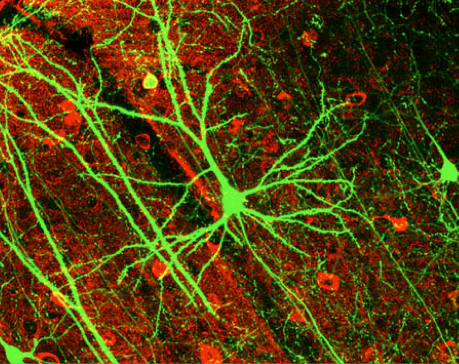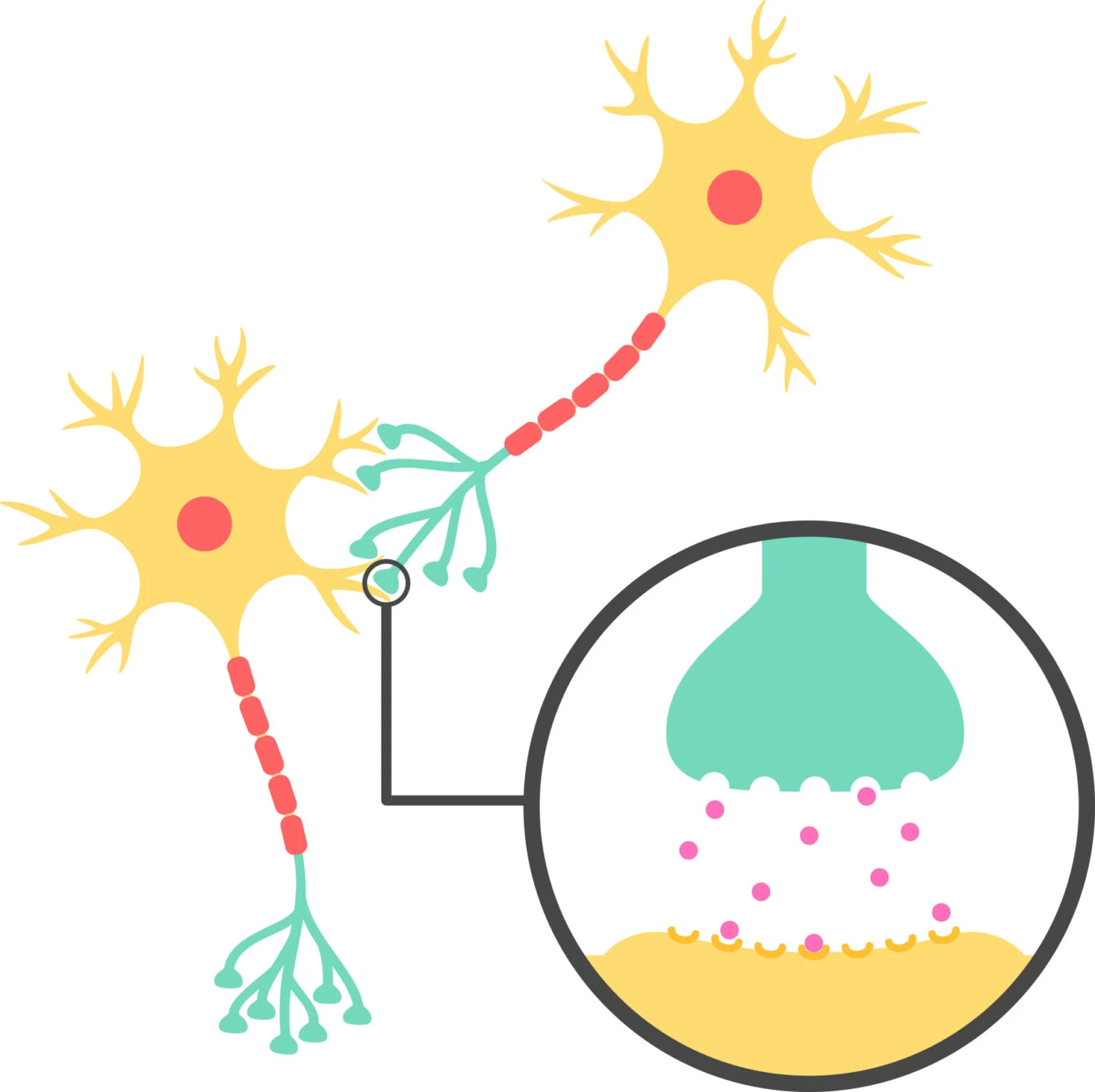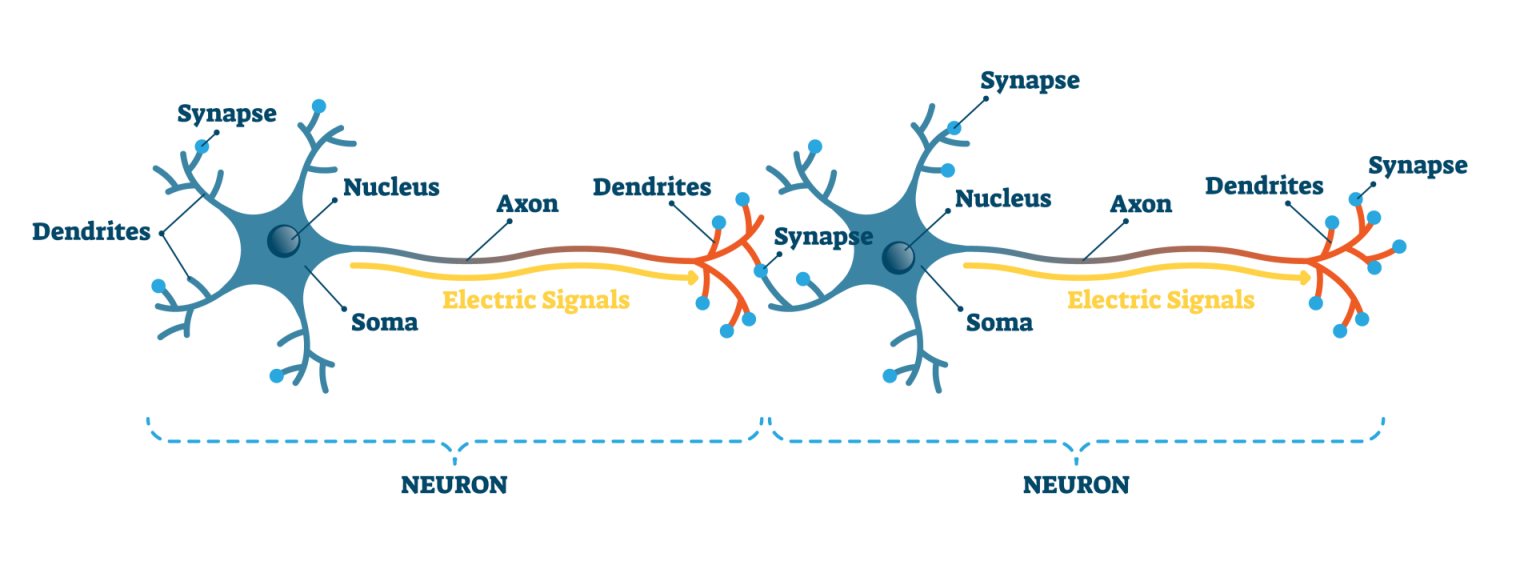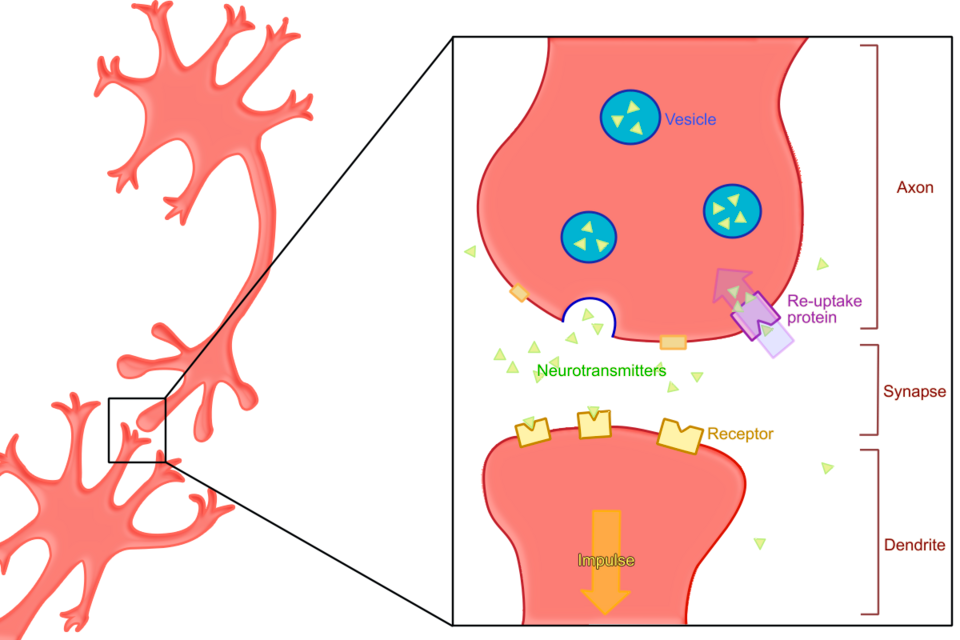Psychology CC
| Multi-select | |
|---|---|
| URL | https://thecrashcourse.com/topic/psychology/ |
Intro
Behavioural sciences
Behavioural science is the branch of science concerned with human behaviour. While the term can technically be applied to the study of behaviour amongst all living organisms, it is nearly always used with reference to humans as the primary target of investigation. The behavioural sciences sit in between the conventional natural sciences and social studies in terms of scientific rigor. Wikipedia
Mental Processes
Mental processes are the functions of our minds (in contrast to observable behavior). The processes can be cognitive, emotional, or motivational. https://www.sciencedirect.com/topics/psychology/mental-process
Structuralism
Structuralism is an intellectual current and methodological approach, primarily in
the social sciences, that interprets elements of human culture by way of their relationship to a broader system. It works to uncover the structural patterns that underlie all the things that humans do, think, perceive, and feel. Alternatively, as summarized by philosopher Simon Blackburn, structuralism is: "The belief that phenomena of human life are not intelligible except through their interrelations.”
Wikipedia
William James
- Along with Charles Sanders Peirce, James established the philosophical school known as pragmatism, and is also cited as one of the founders of functional psychology. A Review of General Psychology analysis, published in 2002, ranked James as the 14th most eminent psychologist of the 20th century.[6] A survey published in American Psychologist in 1991 ranked James's reputation in second place,[7] after Wilhelm Wundt, who is widely regarded as the founder of experimental psychology.[8][9] James also developed the philosophical perspective known as radical empiricism. James's work has influenced philosophers and academics such as Alan Watts,[10] W. E. B. Du Bois, Edmund Husserl, Bertrand Russell, Ludwig Wittgenstein, Hilary Putnam, and Richard Rorty.[11]
- Born into a wealthy family, James was the son of the Swedenborgian theologian Henry James Sr. and the brother of both the prominent novelist Henry James and the diarist Alice James.
James trained as a physician and taught anatomy at Harvard, but never
practiced medicine. Instead, he pursued his interests in psychology and
then philosophy. He wrote widely on many topics, including
epistemology, education, metaphysics, psychology, religion, and mysticism. Among his most influential books are The Principles of Psychology, a groundbreaking text in the field of psychology; Essays in Radical Empiricism, an important text in philosophy; and The Varieties of Religious Experience, an investigation of different forms of religious experience, including theories on mind-cure.[5]
- Along with Charles Sanders Peirce, James established the philosophical school known as pragmatism, and is also cited as one of the founders of functional psychology. A Review of General Psychology analysis, published in 2002, ranked James as the 14th most eminent psychologist of the 20th century.[6] A survey published in American Psychologist in 1991 ranked James's reputation in second place,[7] after Wilhelm Wundt, who is widely regarded as the founder of experimental psychology.[8][9] James also developed the philosophical perspective known as radical empiricism. James's work has influenced philosophers and academics such as Alan Watts,[10] W. E. B. Du Bois, Edmund Husserl, Bertrand Russell, Ludwig Wittgenstein, Hilary Putnam, and Richard Rorty.[11]
Functionalism
- Functionalism in the philosophy of mind is the doctrine that what
makes something a mental state of a particular type does not depend on
its internal constitution, but rather on the way it functions, or the
role it plays, in the system of which it is a part. This doctrine is
rooted in Aristotle’s conception of the soul, and has
antecedents in Hobbes’s conception of the mind as a
“calculating machine”, but it has become fully articulated
(and popularly endorsed) only in the last third of the 20th century.
Though the term ‘functionalism’ is used to designate a
variety of positions in a variety of other disciplines, including
psychology, sociology, economics, and architecture, this entry focuses
exclusively on functionalism as a philosophical thesis about the
nature of mental states.
- The following sections will trace the intellectual antecedents of
contemporary functionalism, sketch the different types of
functionalist theories, and discuss the most serious objections to
them.
- Functionalism in the philosophy of mind is the doctrine that what
Free Associate
- Free association is the expression (as by speaking or writing)
of the content of consciousness without censorship as an aid in gaining
access to unconscious processes.
[1] The technique is used in psychoanalysis (and also in psychodynamic theory) which was originally devised by Sigmund Freud out of the hypnotic method of his mentor and colleague, Josef Breuer.
- Free association is the expression (as by speaking or writing)
Psychoanalysis
- Psychoanalysis is a set of theories and techniques of research that essentially examine the unconscious of the human organism in order to integrate the discovered content into consciousness. Based on dream interpretation, psychoanalysis is also a method for the treatment of mental disorders. Established in the early 1890s by Sigmund Freud, it takes into account Darwin's theory of evolution, ethnology reports, and, in some respects, the earlier clinical research of his mentor Josef Breuer.
BF Skinner
- Burrhus Frederic Skinner was an American psychologist, behaviorist, inventor, and social philosopher. He was the Edgar Pierce Professor of Psychology at Harvard University from 1958 until his retirement in 1974. Skinner developed behavior analysis, especially the philosophy of radical behaviorism, and founded the experimental analysis of behavior, a school of experimental research psychology.
Psychodynamics theories
- Psychodynamics, also known as psychodynamic psychology, in its broadest sense, is an approach to psychology
that emphasizes systematic study of the psychological forces underlying
human behavior, feelings, and emotions and how they might relate to
early experience. It is especially interested in the dynamic relations
between
conscious motivation and unconscious motivation.[1]
- The psychodynamic approach in psychology emphasizes unconscious processes and unresolved past conflicts as influences on behavior. Rooted in Freud’s theories, it explores the interplay of drives, desires, and defense mechanisms in shaping personality and behavior.
- Psychodynamics, also known as psychodynamic psychology, in its broadest sense, is an approach to psychology
Psychologic Research
Hindsight bias
Hindsight bias, also known as the knew-it-all-along phenomenon or creeping
determinism, is the common tendency for people to perceive past events
as having been more predictable than they were. After
an event has occurred, people often believe that they could have
predicted or perhaps even known with a high degree of certainty what the
outcome of the event would be before it occurred.
Wikipedia
Scientific method
Mathematical and experimental techniques employed in the natural sciences; more
specifically, techniques used in the construction and testing of scientific hypothesesThe scientific method is an empirical method for acquiring knowledge that has been referred to while doing science since at least the 17th
century. Historically, it was developed through the centuries from the ancient and medieval world. The
scientific method involves careful observation coupled with rigorous skepticism, because cognitive assumptions can distort the interpretation
of the observation.
Wikipedia
Operationalization
In research design, especially in psychology, social sciences, life
sciences and physics, operationalization or operationalisation is a
process of defining the measurement of a phenomenon which is not
directly measurable, though its existence is inferred from other
phenomena. Operationalization thus
defines a fuzzy concept so as to make it clearly distinguishable,
measurable, and understandable by empirical observation.
Wikipedia
An example of operationally defining personal space.
Chemical Mind
Neurons or Nerve Cells
- A neuron, neurone, or nerve cell, is an excitable cell that fires electric signals called action potentials across a neural network in the nervous system. They are located in the nervous system and help to receive and conduct impulses. Neurons communicate with other cells via synapses, which are specialized connections that commonly use minute amounts of chemical neurotransmitters to pass the electric signal from the presynaptic neuron to the target cell through the synaptic gap.
Bipolar Neuron
- A bipolar neuron, or bipolar cell, is a type of neuron characterized by having both an axon and a dendrite
extending from the soma (cell body) in opposite directions. These
neurons are predominantly found in the retina and olfactory system.
[1] The embryological period encompassing weeks seven through eight marks the commencement of bipolar neuron development.[2] https://en.wikipedia.org/wiki/Bipolar_neuron
- A bipolar neuron, or bipolar cell, is a type of neuron characterized by having both an axon and a dendrite
Unipolar neuron
A unipolar neuron is a neuron in which only one process, called a neurite, extends from the cell body. The neurite then branches to form dendritic and axonal processes. Most neurons in the central nervous systems of invertebrates, including insects, are unipolar. The
cell bodies of invertebrate unipolar neurons are often located around
the edges of the neuropil, in the so-called cell-body rind.
Wikipedia
Multipolar Motor Neuron
A multipolar neuron is a type of neuron that possesses a single axon and
many dendrites, allowing for the integration of a great deal of
information from other neurons. These processes are projections from the neuron cell body.
Wikipedia
Pyramid cell
Pyramidal cells, or pyramidal neurons, are a type of multipolar neuron found in
areas of the brain including the cerebral cortex, the hippocampus, and
the amygdala. Pyramidal cells are the primary excitation units of the mammalian prefrontal cortex and the corticospinal tract. One
of the main structural features of the pyramidal neuron is the conic
shaped soma, or cell body, after which the neuron is named.
Wikipedia
Receptor
- In biochemistry and pharmacology, receptors are chemical structures,
composed of protein, that receive and transduce signals that may be
integrated into biological systems. These
signals are typically chemical messengers which bind to a receptor and
produce physiological responses such as change in the electrical
activity of a cell. For example, GABA, an inhibitory neurotransmitter, inhibits electrical activity of neurons by binding to GABAA receptors.
Wikipedia
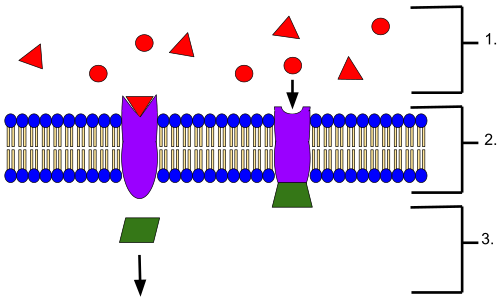
An example of membrane
receptors
.
1. Ligands, located outside the cell
2. Ligands connect to specific receptor proteins based on the shape of the active site of the protein.
3. The receptor releases a messenger once the ligand has connected to the receptor.- 1. Ligands, located outside the cell
- 2. Ligands connect to specific receptor proteins based on the shape of the active site of the protein.
- 3. The receptor releases a messenger once the ligand has connected to the receptor.
- Receptor sites are proteins typically found on the surface of cells, which are able to recognize and bond to specific messenger molecules. https://education.nationalgeographic.org/resource/receptor-sites/
- In biochemistry and pharmacology, receptors are chemical structures,
Myelin Sheath
Myelin is a lipid-rich material that surrounds nerve cell axons to insulate
them and increase the rate at which electrical impulses pass along the
axon. The myelinated axon can be likened to an electrical wire with insulating material around it. However,
unlike the plastic covering on an electrical wire, myelin does not form
a single long sheath over the entire length of the axon.
Wikipedia
Endorphins
Endorphins are peptides produced in the brain that block the perception of pain and increase feelings of wellbeing. They are produced and stored in the pituitary gland of the brain. Endorphins
are endogenous painkillers often produced in the brain and adrenal
medulla during physical exercise or orgasm and inhibit pain, muscle
cramps, and relieve stress.
Wikipedia
Neurotransmitters
A neurotransmitter is a signalling molecule secreted by a neuron to affect another cell across a synapse. The cell receiving the signal, or target cell, may be another neuron, but could also be a gland or muscle cell. Neurotransmitters
are released from synaptic vesicles into the synaptic cleft where they
are able to interact with neurotransmitter receptors on the target cell.
Some neurotransmitters are also stored in large dense core vesicles.
WikipediaExcitatory Neurotransmitters
Excitatory neurotransmitters increase the likelihood that a neuron will fire a signal in the receiving neuron. Learn about the common types of excitatory neurotransmitters, such as acetylcholine, epinephrine, glutamate, and dopamine, and how they are involved in various disorders. https://www.healthline.com/health/neurological-health/excitatory-neurotransmitters
- rev neurons up
Reuptake
- noun
1. The
reabsorption of a neurotransmitter, such as serotonin or
norepinephrine, by a neuron following impulse transmission across a
synapse.
2. A second or subsequent
uptake.
3. Specifically, the
reabsorption of a neurotransmitter by a neuron after the transmission of a neural impulse across a synapse.
- 1. The reabsorption of a neurotransmitter, such as serotonin or
norepinephrine, by a neuron following impulse transmission across a
synapse.
- 2. A second or subsequent uptake.
- 3. Specifically, the reabsorption of a neurotransmitter by a neuron after the transmission of a neural impulse across a synapse.
- noun

